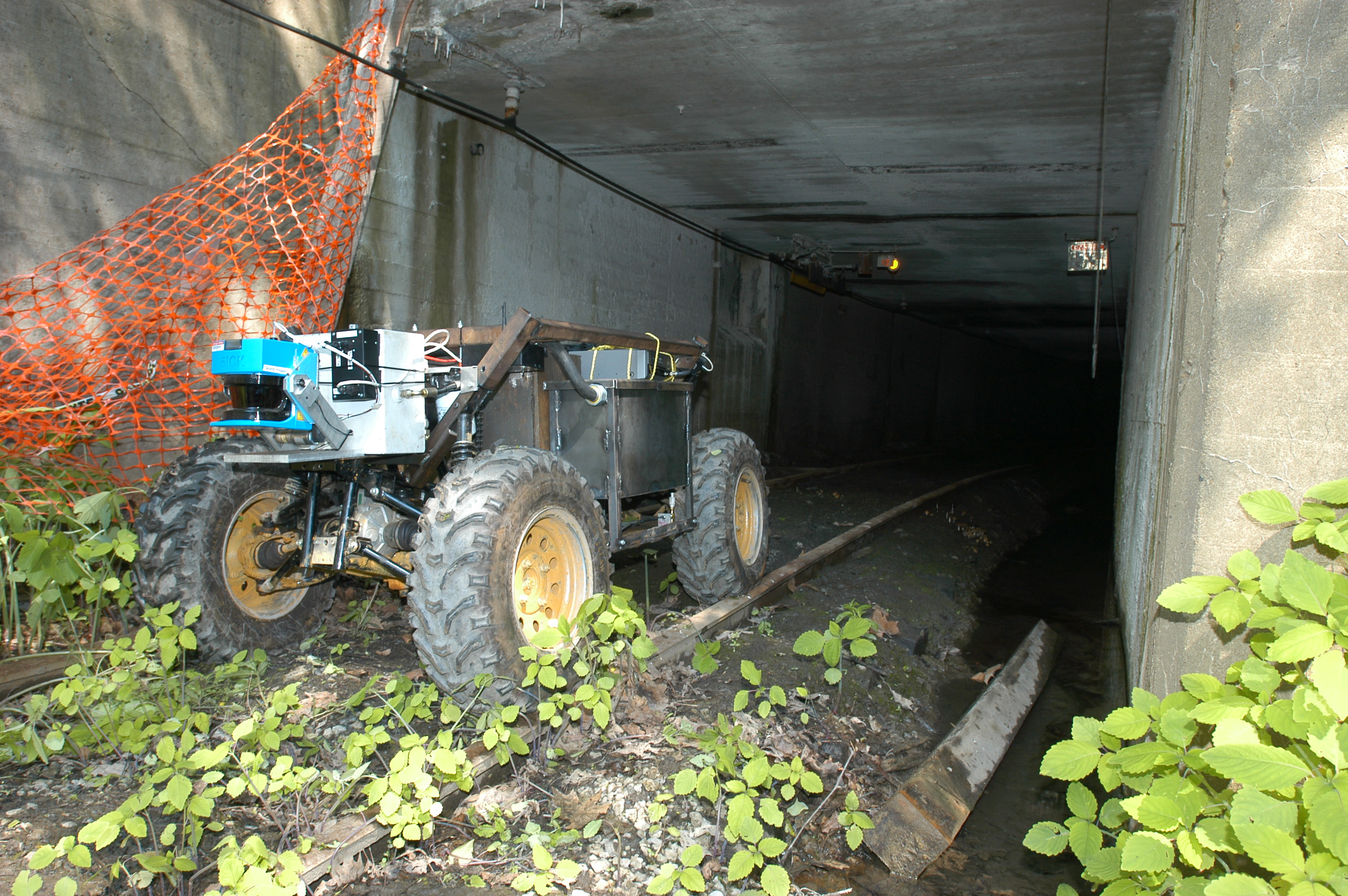
|
The robot has been deployed and built by the CMU Mine Mapping Team [10,24]. Groundhog's chassis unites the front halves of two all terrain vehicles, allowing all four of Groundhog's wheels to be both driven and steered. The two Ackerman steering columns are linked in opposition, reducing Groundhog's outside turning radius to approximately 2.44m. A hydraulic cylinder drives the steering linkage, with potentiometer feedback providing closed-loop control of wheel angle. Two hydraulic motors coupled into the front and rear stock ATV differentials via 3:1 chain drives result in a constant 0.145 m/sec velocity. When in motion, Ground hog consumes upwards of 1kW, where processing and sensing only draw 25W and 75W respectively. Therefore, time spent sensing and processing has minimal impact on the operational range of the robot. The high power throughput combined with the low speed of the robot means that Groundhog has the torque necessary to overcome the railway tracks, fallen timbers, and other rubble commonly found in abandoned mines. Equipped with six deep-cycle lead-acid batteries, and in later experiments with eight such battereis, Groundhog has a locomotive range greater than 3km.
For acquiring 3D scans in a stop and go fashion, Groundhog is
equipped with tiltable SICK laser range finders on either
end. The area of
![]() is scanned with the horizontal resolution
of 361 pts. and vertical of 341 pts. A slice with 361 data points
is scanned in 26ms by the 2D laser range finder (rotating mirror
device). Thus a scan with 361
is scanned with the horizontal resolution
of 361 pts. and vertical of 341 pts. A slice with 361 data points
is scanned in 26ms by the 2D laser range finder (rotating mirror
device). Thus a scan with 361 ![]() 341 data points needs 8.9
seconds. Fig. 4 shows an example scan of the mine.
341 data points needs 8.9
seconds. Fig. 4 shows an example scan of the mine.